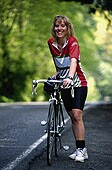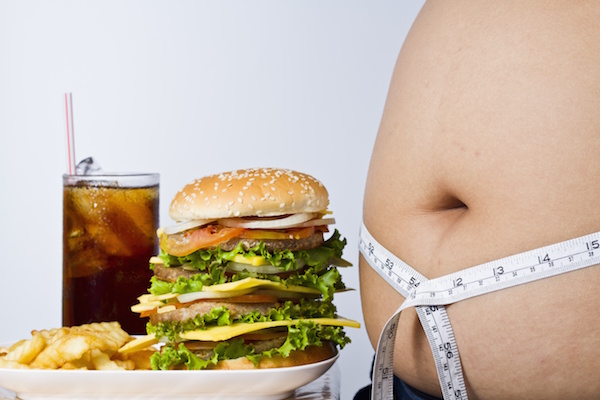
MONDAY, June 28 (HealthDay News) — Riding a bike is as effective as walking briskly at helping premenopausal women keep from gaining more weight, a new study reveals.
Biking is particularly helpful at keeping pounds off such women who are overweight or obese, said study lead author Anne C. Lusk, a research fellow in the department of nutrition at the Harvard School of Public Health in Boston.
“Women of normal body weight can certainly benefit from biking,” she noted. “But specifically for overweight and obese premenopausal women, bicycling just two to three hours per week makes them 46 percent less likely to gain more than 5 percent of their initial body weight over the long run.”
Researchers also found that slow walking — walking less than three miles an hour — does not help control weight.
Lusk and her colleagues report their findings in the June 28 issue of Archives of Internal Medicine.
The authors point out that in 1995, the U.S. Centers for Disease Control and Prevention and the American College of Sports Medicine recommended that all American adults engage in a half hour a day of moderately intense activity.
Despite the advisory, two-thirds of Americans are now either overweight or obese, Lusk and her team note, while 16 percent of American children and adolescents are overweight and one-third are at risk for gaining excess weight.
In earlier research, the study team had reported that brisk walking helped women who were at normal weight or had just lost slimmed down keep weight off, while slow walking showed no such benefit.
This time, the researchers decided to explore the potential health benefits that could be reaped if more women took up routine biking.
Just half of 1 percent of Americans over the age of 16 who commute to work use a bicycle. Of that group, only 23 percent are women, the authors note.
The authors looked at medical history, body weight patterns, exercise habits and general lifestyle data concerning more than more than 18,400 women who participated in the Nurses’ Health Study II. The women, all between 25 and 42 years old in 1989, were premenopausal through 2005 and had no physical impediments to exercise.
Lusk’s team focused on the weight change that took between 1989 and 2005.
In 1989, about half the women said they had spent time walking slowly, while almost 40 percent said they walked quickly and nearly half said they had spent some time riding a bike.
By 2005, the women had gained an average of more than 20 pounds, while significantly decreasing the total amount of time they spent being active.
However, women who didn’t bike in 1989 but did to some degree by 2005 experienced significantly less weight gain on average. This was especially true among women carrying excess weight, for whom biking as little as five minutes a day made a difference. And the longer women biked, the less weight they gained, the authors observed.
In contrast, those who decreased bike time over the years, from under 15 minutes per day to little or no biking, saw bigger weight gains.
And normal-weight women who bicycled more than four hours a week in 2005 had lower odds of gaining more than 5 percent of their baseline body weight, the researchers found.
The team concluded that bicycling, like brisk walking, should be encouraged for premenopausal women, particularly if they are coping with weight issues.
“We’re advocating for a physical activity that is a routine part of the day,” Lusk said. “You don’t have to think about your heart rate, how many times a week that you do it, or all of that. We’re just recommending that seven days a week you put brisk walking or biking into your day.”
Lusk added that on a broad public policy level the United States would do well to take after The Netherlands, where wide bike lanes — as large as sidewalks — permit people to bike side by side, thereby encouraging biking as a social experience.
“Often where we have bike lanes, we’re still using the model of the ‘sole warrior’ biking in a narrow single lane, often on the left side of cars where people don’t feel comfortable,” she noted. “We need to rethink this approach.”
Cedric X. Bryant, chief science officer of the American Council on Exercise (ACE) in San Diego, said Lusk’s public policy recommendations “are right on target.”
“Her argument … fits in with the aim to help Americans implement physical activity into their lifestyles,” he said.
“Biking is non-impact, so it’s very joint-friendly, and so making that activity more accessible to people is where I think all the leading fitness organizations are headed,” Bryant said.
However, Dr. Nieca Goldberg, medical director of the Women’s Heart Program at NYU Langone Medical Center in New York City, issued a cautionary note regarding how women might interpret this new information.
“I think downplaying the benefit of slow walking is a bad message to send out to people who may have spent most of their life sitting in a chair, so to speak,” Goldberg said. “Because slow walking is a good starting point if you don’t already walk. It’s cheaper than biking, and maybe easier, and basically you have to start somewhere.”
More information
For more on women and exercise, visit the U.S. Department of Health and Human Services.

